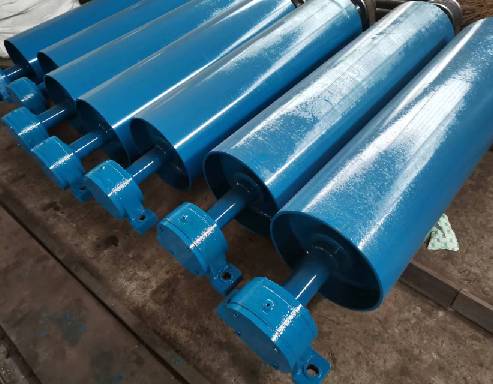 Afrikaans
Afrikaans  Albanian
Albanian  Amharic
Amharic  Arabic
Arabic  Armenian
Armenian  Azerbaijani
Azerbaijani  Basque
Basque  Belarusian
Belarusian  Bengali
Bengali  Bosnian
Bosnian  Bulgarian
Bulgarian  Catalan
Catalan  Cebuano
Cebuano  Corsican
Corsican  Croatian
Croatian  Czech
Czech  Danish
Danish  Dutch
Dutch  English
English  Esperanto
Esperanto  Estonian
Estonian  Finnish
Finnish  French
French  Frisian
Frisian  Galician
Galician  Georgian
Georgian  German
German  Greek
Greek  Gujarati
Gujarati  Haitian Creole
Haitian Creole  hausa
hausa  hawaiian
hawaiian  Hebrew
Hebrew  Hindi
Hindi  Miao
Miao  Hungarian
Hungarian  Icelandic
Icelandic  igbo
igbo  Indonesian
Indonesian  irish
irish  Italian
Italian  Japanese
Japanese  Javanese
Javanese  Kannada
Kannada  kazakh
kazakh  Khmer
Khmer  Rwandese
Rwandese  Korean
Korean  Kurdish
Kurdish  Kyrgyz
Kyrgyz  Lao
Lao  Latin
Latin  Latvian
Latvian  Lithuanian
Lithuanian  Luxembourgish
Luxembourgish  Macedonian
Macedonian  Malgashi
Malgashi  Malay
Malay  Malayalam
Malayalam  Maltese
Maltese  Maori
Maori  Marathi
Marathi  Mongolian
Mongolian  Myanmar
Myanmar  Nepali
Nepali  Norwegian
Norwegian  Norwegian
Norwegian  Occitan
Occitan  Pashto
Pashto  Persian
Persian  Polish
Polish  Portuguese
Portuguese  Punjabi
Punjabi  Romanian
Romanian  Russian
Russian  Samoan
Samoan  Scottish Gaelic
Scottish Gaelic  Serbian
Serbian  Sesotho
Sesotho  Shona
Shona  Sindhi
Sindhi  Sinhala
Sinhala  Slovak
Slovak  Slovenian
Slovenian  Somali
Somali  Spanish
Spanish  Sundanese
Sundanese  Swahili
Swahili  Swedish
Swedish  Tagalog
Tagalog  Tajik
Tajik  Tamil
Tamil  Tatar
Tatar  Telugu
Telugu  Thai
Thai  Turkish
Turkish  Turkmen
Turkmen  Ukrainian
Ukrainian  Urdu
Urdu  Uighur
Uighur  Uzbek
Uzbek  Vietnamese
Vietnamese  Welsh
Welsh  Bantu
Bantu  Yiddish
Yiddish  Yoruba
Yoruba  Zulu
Zulu driven pulley and driver pulley
Understanding Driven and Driver Pulleys Mechanics and Applications
The world of mechanical engineering is rich with components that contribute to the efficiency and functionality of machines. Among these components, pulleys play a crucial role in various applications ranging from simple machines to complex assembly lines. In particular, the concepts of driven pulleys and driver pulleys are foundational in understanding how rotational movement is transferred within a mechanical system.
Defining the Components
At its core, a pulley is a wheel on an axle or shaft designed to support movement and change of direction of a cable or belt. In any pulley system, there are typically two main components the driver pulley and the driven pulley.
1. Driver Pulley This is the pulley that receives power from the engine or motor. When the driver pulley rotates, it generates kinetic energy that is transmitted to the belt or cable attached to it. Essentially, it acts as the initiator of motion in the system.
2. Driven Pulley In contrast, the driven pulley is the component that receives power from the driver pulley. It is connected to the load or the part of the machine that performs the work. The driven pulley rotates as a result of the motion transmitted through the belt or cable from the driver pulley.
How They Work Together
The interaction between the driver and driven pulleys is the foundation of many mechanical systems. When the driver pulley turns, the attached belt or cable moves, causing the driven pulley to rotate as well. The speed and torque of the driven pulley can vary based on several factors, including the diameter of the pulleys and the ratio of their sizes, a concept known as the pulley ratio.
driven pulley and driver pulley

1. Pulley Ratio The pulley ratio is significant in determining the outcome of the energy transfer. For instance, if the driver pulley has a diameter that is twice that of the driven pulley, the driven pulley will spin at twice the speed of the driver pulley. Conversely, this also means that the driven pulley will have half the torque of the driver pulley.
This relationship allows engineers and designers to tailor the performance of machines for specific applications. It is a fundamental principle utilized in automotive transmissions, conveyor systems, and various types of machinery ranging from elevators to industrial equipment.
Applications of Driven and Driver Pulleys
Pulleys are widely used in numerous industries and applications. In the automotive industry, for instance, the drive belts connect the driver pulley (often linked to the engine) to various driven pulleys that operate components like alternators, water pumps, and air conditioning compressors. The selection of the appropriate pulley sizes and configurations is crucial in optimizing both efficiency and power utilization.
In manufacturing and material handling, conveyor systems utilize pulleys to move materials across different points in a factory. The design of these systems often includes numerous driven pulleys powered by a central driver pulley, allowing for synchronized and efficient movement of products.
Moreover, pulleys serve a critical role in lifting mechanisms. Cranes and hoists employ a system of driver and driven pulleys to lift heavy loads. By adjusting the sizes of the pulleys in such systems, operators can significantly affect the lifting power and speed.
Conclusion
In summary, the interplay between driven pulleys and driver pulleys is essential to the functionality of many mechanical systems. Understanding their roles and the mechanics behind their operation allows engineers and technicians to design more efficient machines across a variety of applications. As technology continues to evolve, the design and implementation of pulley systems will remain a fundamental aspect of engineering, influencing everything from everyday appliances to advanced industrial equipment. Whether in simple applications or complex machinery, the principles governing driven and driver pulleys illustrate the fundamental mechanics at play in modern engineering.
-
Revolutionizing Conveyor Reliability with Advanced Rubber Lagging PulleysNewsJul.22,2025
-
Powering Precision and Durability with Expert Manufacturers of Conveyor ComponentsNewsJul.22,2025
-
Optimizing Conveyor Systems with Advanced Conveyor AccessoriesNewsJul.22,2025
-
Maximize Conveyor Efficiency with Quality Conveyor Idler PulleysNewsJul.22,2025
-
Future-Proof Your Conveyor System with High-Performance Polyurethane RollerNewsJul.22,2025
-
Driving Efficiency Forward with Quality Idlers and RollersNewsJul.22,2025





























